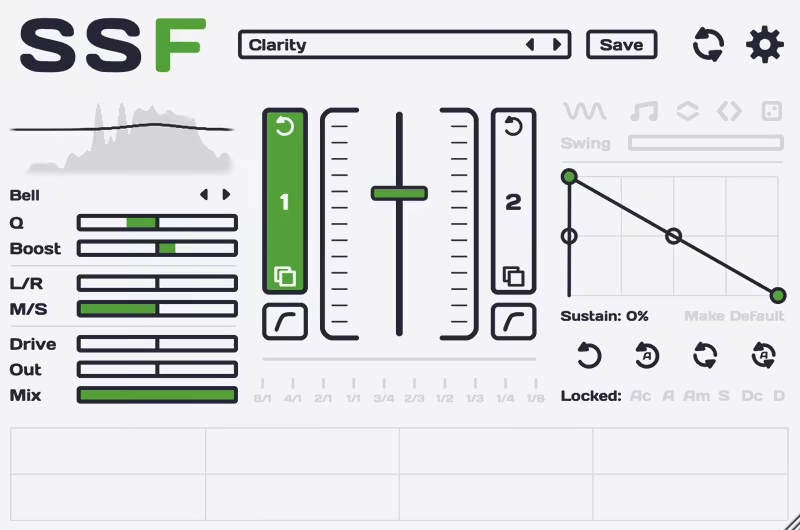A powerful creative filter that’s fun to use and perfect for adding movement, but not the simplest option for basic filtering needs
Price
Pros
- Intuitive modulation system makes rhythmic filtering effortless
- 68 diverse filter types for both standard and experimental sound design
- Step sequencer and randomization make pattern creation fast and fun
- Dual-filter design allows complex sound shaping with ease
- Low CPU usage unless pushed with extreme modulation
Cons
- Not ideal for basic filtering tasks if you just need simple cuts
- Can get chaotic with heavy modulation, requiring fine-tuning
Today, we’re diving into Sixth Sample SSF, a creative filtering plugin that promises to take modulation and movement to a whole new level.
Filters are one of those things in music production that you either use all the time without thinking or totally forget about until you need them. They’re everywhere, EQs, synths, effects chains, but most of the time, they’re just doing a basic job of cutting or shaping frequencies.
Enter Sixth Sample SSF, which takes the humble VSTs and asks, “What if we made this way more fun?”
SSF is not your standard low-pass/high-pass situation. It’s got modulation, sequencing, and a bunch of wild filter types that go way beyond just rolling off some highs. The idea is to add movement and dynamics to your sound without having to manually automate everything.
If you’ve ever spent way too long drawing in tiny automation curves just to get the plugin to behave the way you want. Well, SSF seems like a way to skip that headache.
But does it actually make a difference in a mix? Or is it just another “creative” effect that sounds cool in theory but ends up collecting dust? I’ve spent some time messing with it, and there’s definitely a lot to talk about. Let’s dig in.
| Feature | Description |
| 68 Filters & Effects | Covers everything from standard low-pass/high-pass to phasers, formant, and even crunchy non-linear filters. |
| Self-Modulating Cutoff | Cutoff can modulate itself, allowing for dynamic movement without manual automation. |
| Step Sequencer Modulation | Lets you create tempo-synced modulation patterns without drawing tons of automation points. |
| Dual-Filter Design | Two independent filters can run in series or parallel for more complex sound shaping. |
| Randomization & Shuffle | Generates new modulation patterns instantly while keeping everything locked to the tempo. |
| MIDI Sync & Beat Locking | Modulation stays in sync with your track’s tempo for precise rhythmic effects. |
| Drive & Clipper | Adds harmonic saturation and prevents peaks from going overboard. |
| Stereo & Mid/Side Modes | Lets you apply filtering separately to the left/right or mid/side signals. |
| 10 Color Themes | Customizable UI styles for different aesthetics. |
Features
Now that we’ve got a quick overview let’s break these features down and see what SSF actually brings to the table. There’s a lot going on under the hood, from modulation tricks to filter madness, so let’s get into it.
- 68 Filters & Effects
Most plugins give you the basics: low-pass, high-pass, band-pass, and maybe a notch filter if they’re feeling generous. SSF, on the other hand, throws in 68 different types. That’s not just overkill for the sake of it; there’s actually a lot of useful stuff here.
You’ve got your standard ones (low-pass, high-pass, band-pass, notch), but then it gets interesting. There are phasers, formant and comb filters, and some crunchy non-linear options that introduce saturation and weird harmonics. If you like experimenting with sound design, there’s a lot to dig into here. The phasers, in particular, sound great, not something you see in these types of plugins very often.
- Self-Modulating Cutoff
This is where SSF starts separating itself from standard units. Instead of manually automating the cutoff, SSF lets the filter move on its own. The cutoff slider can be set to modulate itself, creating a constantly shifting effect without needing to draw automation curves.
It’s a small thing, but it makes a big difference in workflow. Instead of setting up an LFO or going into your DAW’s automation panel, you just tweak a couple of sliders and get instant movement. This is especially useful for making static loops feel more organic, like adding subtle movement to a hi-hat loop or making a synth pulse with the beat.
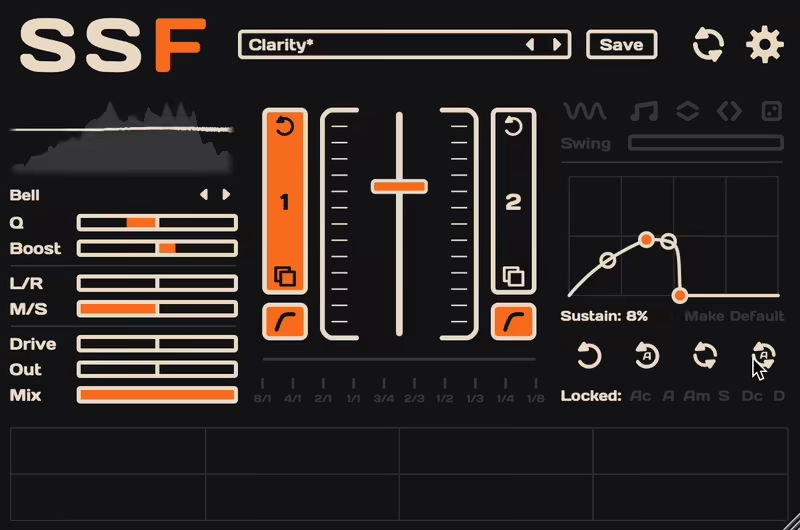
- Step Sequencer Modulation
If you’ve ever tried to program tempo-synced filter sweeps, you know how annoying it can be. Most plugins make you draw in tiny nodes, and half the time, it doesn’t even sound right. SSF solves this with a built-in step sequencer that makes it stupidly easy to create rhythmic modulation patterns.
You can draw in steps manually or use the randomizer to generate patterns instantly. Patterns sync to your project’s tempo, so everything stays on time, and you can shuffle or tweak individual steps to fine-tune the movement.
This is one of the best parts of SSF. It’s fast, intuitive, and actually fun to use. Whether you’re adding movement to a pad, creating pulsing sweeps, or making a rhythmic tremolo effect, it just works.
- Dual-Filter Design
Having two filters instead of one might not sound like a big deal, but it actually opens up a lot of possibilities. SSF lets you run two filters at the same time, either in series or parallel, meaning you can shape your sound in more complex ways.
For example, you could run a low pass on one side and a high pass on the other, creating a weird stereo effect. Or, you could use a formant on top of a standard low-pass, adding vocal-like movement to a synth. If you want super extreme filtering, you can stack two high-resonance filters and push them into crazy sound design territory.
It’s simple to set up, and the fact that both ones have independent modulation options makes it even better.
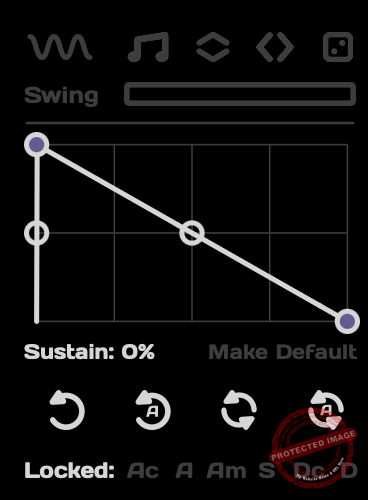
- Randomization & Shuffle
Sometimes, you just want to hit a button and get instant inspiration. SSF has a randomization system that generates modulation patterns on the fly. This means you can:
This is perfect if you don’t know exactly what you’re looking for but want to stumble into something cool. It’s especially useful for creating evolving textures in ambient or experimental music.
- Drive & Clipper
Filter untis aren’t just for removing frequencies; they can add character, too. SSF includes a Drive knob that adds saturation and harmonic distortion, making your sound feel warmer and fuller. There’s also a Clipper that prevents peaks from going overboard, which is useful if you’re doing extreme filtering and don’t want things to get too harsh.
It’s not the most detailed saturation section ever, but it adds some nice color to the sound, especially on drums and bass.
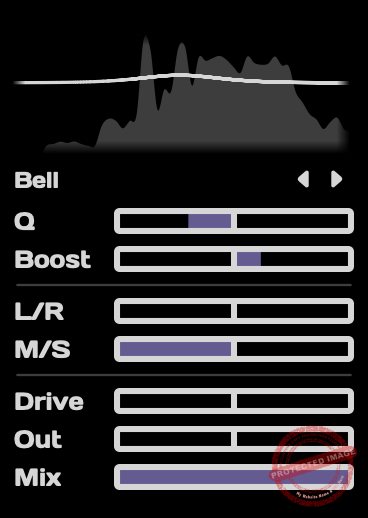
- Stereo & Mid/Side Modes
Filter plugins usually apply the same effect to both sides of a stereo signal, but SSF gives you mid/side and left/right modes. This means you can filter the mids while leaving the sides untouched (great for making room in a mix) apply different filters to the left and right channels (weird stereo fun) or do subtle stereo widening by using different cutoff movements on each side.
It’s not something you’ll use all the time, but for sound design and creative mixing, it’s a nice bonus.
SSF packs a lot of features, but how easy is it to actually use? A plugin with this much modulation potential could easily turn into a cluttered mess, but Sixth Sample has kept things surprisingly straightforward and intuitive.
Interface and Workflow
A plugin like this could easily be overwhelming, but SSF keeps things surprisingly intuitive. Everything is laid out in a way that makes sense; you don’t need to dig through menus or read a manual just to get started.
Interface
The cutoff slider is the first thing you notice, and for a good reason: it’s not just a static control; it visually reacts to modulation, so you can see exactly what’s happening in real time. The filter selection is right up front, so there’s no endless scrolling or clicking through dropdowns. The step sequencer is also easy to work with; you just drag in some steps and tweak the shape, and you’ve got a tempo-synced pattern in seconds.
Visually, it’s clean and modern, with enough feedback to keep things clear without feeling cluttered. The 10 different UI color themes are a nice bonus, but it won’t make you a better producer. At least you won’t be staring at a color scheme you hate.
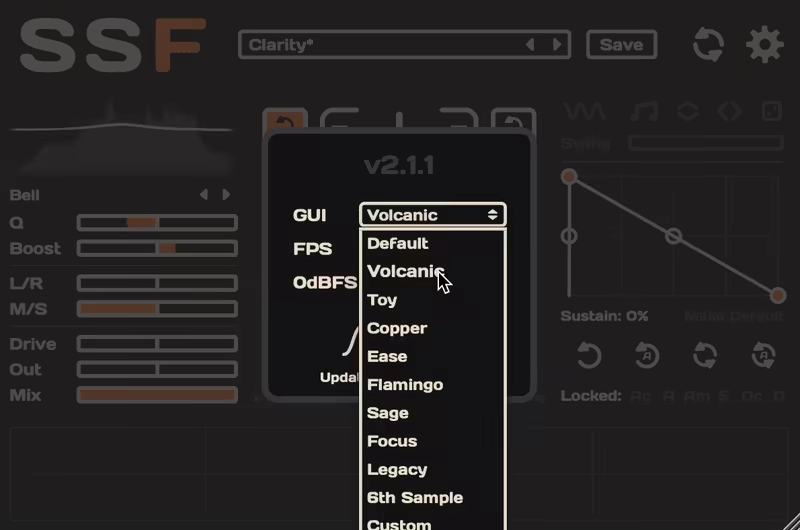
Workflow
SSF is one of those plugins that gets out of your way and lets you experiment. Want to add movement? Just turn on self-modulation or throw a pattern into the step sequencer. Need something more unpredictable? Hit the randomize button, and it’ll generate something new without completely wrecking your settings.
The dual-filter system is straightforward: one click, and boom, you’ve got a second one running in series or parallel. If you’re into stereo or mid/side filtering, SSF makes that easy too, letting you process the left and right channels separately or filter just the mids while keeping the sides untouched.
The Drive and Clipper controls are simple but effective. You can add some warmth and grit without going overboard, and the clipper helps keep things under control if you’re pushing the filter hard.
Overall, SSF never feels complicated for the sake of being complicated. It’s a plugin that invites you to tweak, experiment, and have fun, which is exactly what a creative filter should do.
First Impressions and Sound
The first thing I noticed with SSF? It’s one of those plugins that makes you want to keep turning knobs just to see what happens. Some feel clinical and lifeless like they’re just doing a job and going home. SSF, on the other hand, feels like it wants to play.
The basic filters, including low-pass, high-pass, and band-pass, sound clean and smooth, with no weird digital harshness or phasing issues. But the fun really starts when you dig into the more experimental stuff. The phasers add movement without getting too washy, the formant give you that talking, vowel-like effect, and the comb create those metallic, resonant textures that can turn a boring sound into something completely different. It’s like having a regular filter that suddenly decided to join a psychedelic rock band.
Then there’s the modulation, which is where SSF really earns its place. I threw it on a drum loop, dialed in a step-sequenced filter pattern, and suddenly, the beat had this pulsing, breathing energy. It’s perfect for adding grooves without having to manually draw automation curves. The self-modulating cutoff is another great feature; just set the range, and it moves on its own like it’s alive.
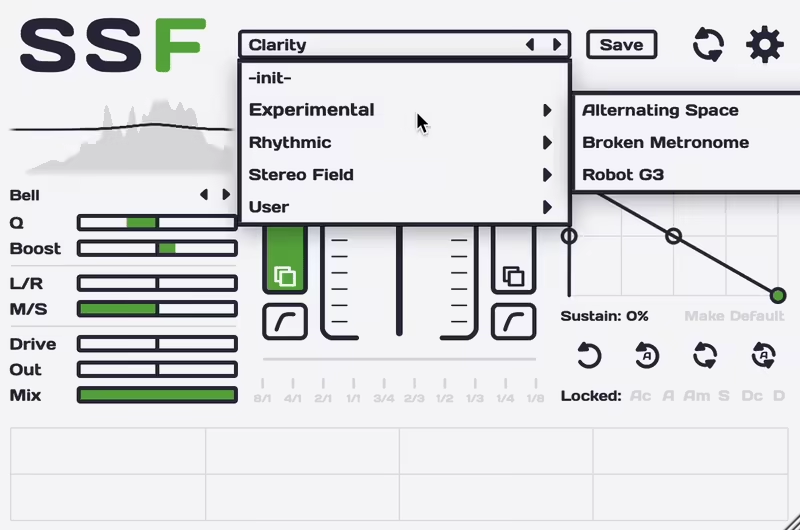
The Drive and Clipper add a nice touch. The drive gives you a bit of saturation and warmth while the clipper keeps things from getting out of control. It’s not over-the-top distortion, but it definitely adds some weight, especially to drums and basslines.
What I love about SSF is that it never feels like a chore to use. Some plugins are powerful but require a deep dive to get anywhere interesting. SSF? You can just throw it on a track, tweak a few knobs, and get something cool happening almost instantly.
Next, let’s talk compatibility and system performance because the last thing anyone needs is another CPU-hogging plugin slowing down their session.
Compatibility
| Platform | Supported Formats |
| Windows | VST3, AAX |
| macOS | AU, VST3, AAX |
| System Requirements | Windows 8.1 or newer
macOS 10.13 or newer |
| DAW Compatibility | Works with any DAW that supports VST3, AU, or AAX |
| CPU Usage | Efficient, but heavy modulation settings can increase load |
Conclusion
SSF takes something as basic as a filter VST and turns it into a creative tool you actually want to use. It’s not just about removing frequencies, it’s about adding movement, rhythm, and texture to your sounds without getting stuck in automation hell.
The modulation system is the real highlight, making it ridiculously easy to create tempo-synced patterns or organic, evolving movements. The wide variety of filters (seriously, 68 is a lot) ensures that it works for everything from subtle mix adjustments to full-on sound design madness.
That said, it’s not for everyone. If you just need a basic filter to clean up a mix, this might be overkill. But if you like experimenting, adding rhythmic dynamics, or making sounds feel more alive, SSF is one of the most fun and intuitive filter plugins out there.

Shaurya discovered his passion at the intersection of writing and music. Starting his career as a songwriter and rapper, he gradually picked up FL Studio and soon delved deep into the world of audio engineering and music production. Based in Delhi, India, he has worked with top studios, been featured on Red FM, garnered millions of streams on Spotify, and released music with major labels like Sony and Hitz.

